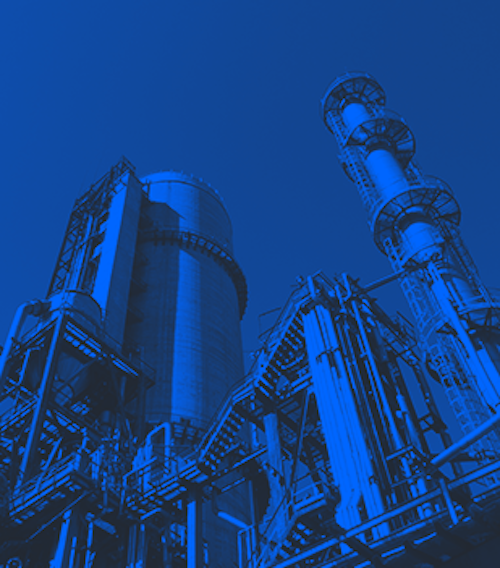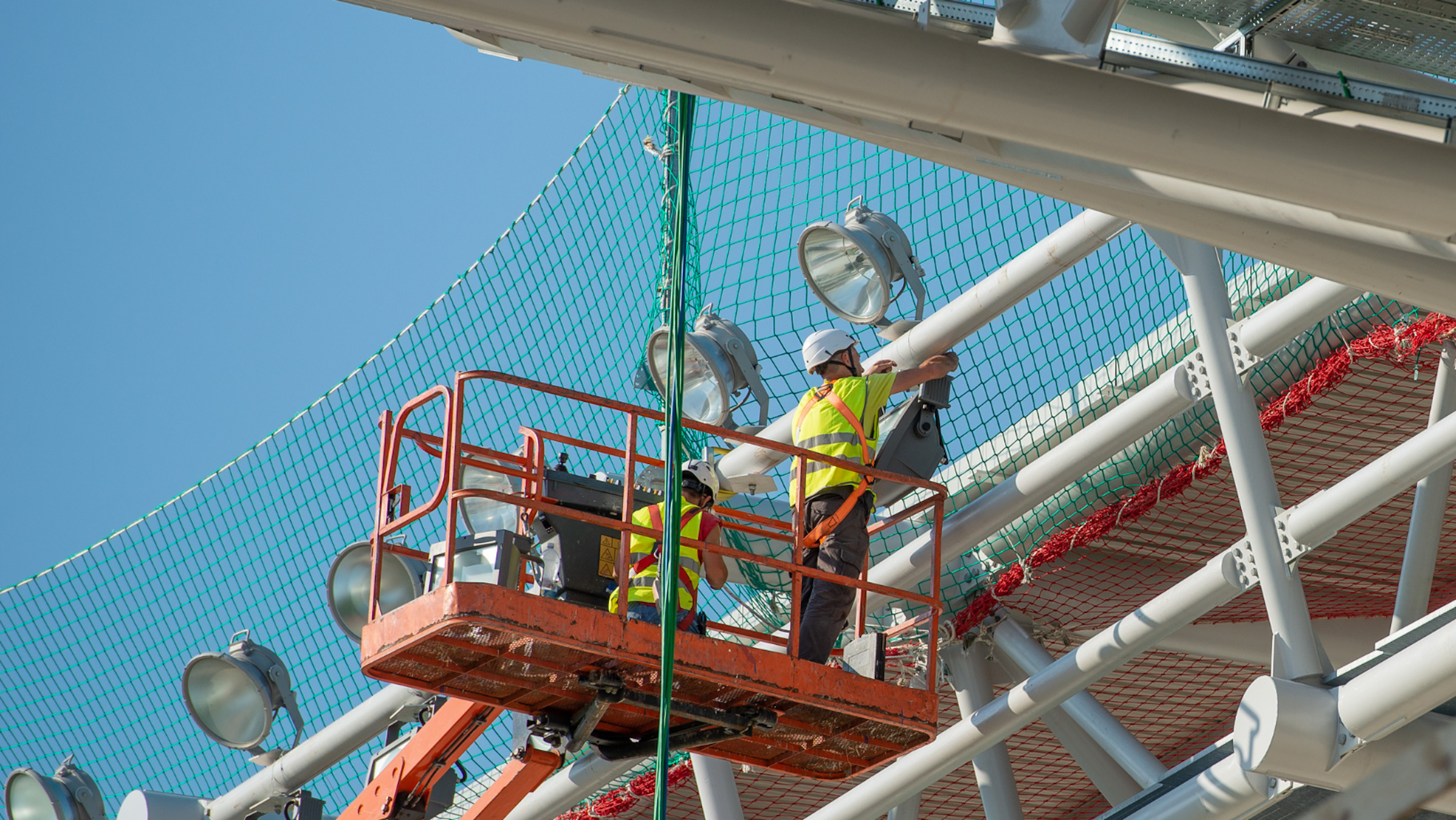Working at Height: How to Ensure Safety and Compliance
Working at height is a critical aspect of industries such as energy, oil and gas, and construction. These sectors rely heavily on tasks performed at elevated locations, which can expose workers to significant risks if proper safety measures are not in place - find out how you can ensure compliance in this blog.
Working at height is a critical aspect of industries such as energy, oil and gas, and construction. These sectors rely heavily on tasks performed at elevated locations, which can expose workers to significant risks if proper safety measures are not in place.
In the United Kingdom, and globally, stringent laws and regulations exist to ensure the safety and well-being of individuals engaged in working at height within these industries. Compliance with these regulations is vital for both employers and employees to prevent accidents, injuries, and fatalities. In this blog, we will explore how to ensure safety, and compliance with health and safety regulations when working at height.
The importance of safety protocols when working at height
Working at height holds immense importance within critical industries as these sectors undertake complex operations that often involve tasks performed at elevated locations, such as installing equipment, conducting inspections, or carrying out maintenance work.
The Health and Safety at Work Act 1974 serves as the foundation of legislation, placing a legal duty on employers to ensure the health, safety, and welfare of their employees. Additionally, industry specific regulations such as the Work at Height Regulations 2005, provide comprehensive guidelines and requirements for employers and individuals involved in work-at-height activities across various sectors, including offshore installations. These regulations are designed to meet global standards, including those set by organisations like the International Labour Organization (ILO) and the International Organisation for Standardization (ISO).
Despite these regulatory measures, accidents and injuries continue to occur, resulting in significant loss of time and financial resources. Statistics from industry reports highlight the alarming frequency of incidents and reinforce the need for prioritising safety and compliance when working at height in the energy, oil and gas, and construction industries. By adhering to these regulations, employers and employees can mitigate risks and ensure the well-being of workers while maintaining the smooth operation of critical activities.
How to ensure safety and compliance when working at height
Ensuring safety and compliance when working at height is of paramount importance to protect workers and prevent accidents. To achieve this, several key measures should be implemented.
Firstly, thorough risk assessments must be conducted before any work at height takes place, identifying potential hazards and implementing appropriate control measures. Adequate training and competency assessments should be provided to all workers involved in tasks at height, equipping them with the necessary knowledge and skills to carry out their duties safely.
Additionally, the use of suitable and properly maintained equipment, such as scaffolding, fall arrest systems, and personal protective equipment (PPE), is crucial. Regular inspections and maintenance checks should be conducted to ensure the integrity of the equipment. Clear communication channels and effective supervision on-site are essential to monitor compliance and address any safety concerns promptly.
Fostering a culture of safety, where workers are encouraged to report hazards and near-misses without fear of reprisal, plays a vital role in maintaining a safe working environment. By adhering to guidelines and taking measures to mitigate risks companies can prioritise safety and compliance, safeguarding the well-being of their workforce.
Working at height: recommended safety products
To help further the safety of the above measures, the use of durable and high-quality preventative products such as safety signs and tags is recommended. Here are some products we recommend:
Scaffolding tags and tag holders
When working on scaffolding, the risk of height-related injuries is high. Working at height is a critical aspect of industries such as energy, oil and gas, and construction. These sectors rely heavily on tasks performed at elevated locations, which can expose workers to significant risks if proper safety measures are not in place. Scaffolding tags can also be designed to inform operatives of the importance of safety compliance when working at height, preventing workplace injuries or accidents.
Our scaffolding tags are designed specifically for durability and efficiency. Our tag holders are flexible and shatterproof to provide the most reliable solution for extreme environments. Multiple fixing points ensure they can be securely fastened in any scenario.

Ladder inspection tags
Ensuring that ladders are inspected and safe to use when working from height is of utmost importance. If a ladder is not inspected and deemed safe, it can pose a significant risk to the user's safety and well-being. A faulty ladder may have weak or damaged rungs, loose or unstable components, or inadequate weight capacity, increasing the likelihood of accidents and falls.
This is where ladder inspection tags come in – these inspection tags ensure routine assessments are simple to carry out and keep personnel safe and informed of the ladder’s status.
The REGALTAG Ladder Inspection Tags are a durable and reliable solution, with easy application that removes the need for holders which can become damaged or detached. The full Ladder Tag Kit provides safety labels to prevent use when not inspected and includes an invaluable ladder angle indicator to quickly show workers when their ladder is correctly set up and safe to use.
XDROP drop prevention mats
When working at height, the risk of falling objects poses a significant hazard to both workers and the surrounding environment. These objects can cause severe injuries, property damage, and even fatalities. To mitigate this risk, the implementation of drop prevention measures is crucial.
Drop prevention measures involve various strategies and equipment designed to secure tools, equipment, and materials at elevated work areas. One effective solution is the use of drop prevention mats. Drop prevention mats are specially designed to be placed on elevated or grated work surfaces or open handrails to create a secure and stable platform for tools, equipment, and materials.
Our XDROP mats are an efficient solution for stopping small tools, bolts and other items from falling through decking grids or from height and causing injury or damage. As it is frequently deployed in high-risk areas, the XDROP mat is fire retardant and is manufactured from a premium mesh material to reduce the ‘sail effect’ and any puddling by allowing wind and liquids to pass through.
The positioning of the marine grade fastenings is designed to allow the XDROP mat to be folded for use in confined workspaces and secured to handrails where necessary.

Ensure safety and compliance when working from height with REGALTAG
At REGALTAG, our approach to safety when working from height is simple. With a focus on design and durability, we deliver solutions that enhance the safety and productivity of your operations.
If you’d like to find out more about how we can help with your safety solutions, contact our friendly team at REGALTAG® today. We’re more than happy to answer any questions you have.
Subscribe
Join 10,000+ others receiving our monthly updates. Free Tag knowledge delivered straight to your inbox.






